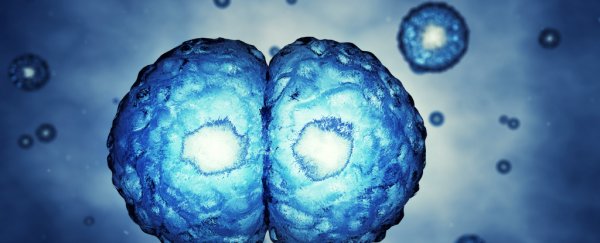Pluripotent cells are great, but they can be difficult to steer into growing the way you want. Now scientists have found a new way to create 3D-printed 'building blocks' of embryonic stem cells (ESCs), which could be used for growing micro-organs, performing tissue regeneration experiments, testing medication and other biology research purposes.
While bioprinting with ESCs is not entirely new, until recently researchers have only managed to produce two-dimensional sheets of cells. Now a team of scientists from Tsingua University in China and Drexel University in Philadelphia have published a study in Biofabrication, introducing a novel technique for printing a grid-like 3D structure laden with stem cells.
In normal biological conditions ESCs naturally tend to cluster together into spherical 'embryoid bodies' – clumps of pluripotent cells which can go on to develop into any type of cell or tissue in the human body.
Researchers note that this process mimics the early stages of embryo formation, and a ball-shaped embryoid body is more relevant for study than the usual sheets you get when growing cells on a flat petri dish.
Because the 3D arrangement of ESCs could influence cell differentiation and function, the researchers note that creating embryoid bodies in the lab is necessary, but difficult to do in terms of exercising control over how the cells will clump and how big the embryoid body will get. The new 3D-printing approach allows scientists to create uniform stem cell building blocks with high precision.
"It was really exciting to see that we could grow embryoid body in such a controlled manner", said lead author Wei Sun. "The grown embryoid body is uniform and homogenous, and serves as a much better starting point for further tissue growth."
For this new method, the researchers mixed the ESCs with hydrogel, and printed a tiny six-layered grid square, 8 millimetres across and 1 millimetre thick.
The whole construct was then cultured and researchers watched the cells grow into ball-shaped embryoid bodies without leaving their spots in the grid. This means the cells were dividing and staying put, instead of randomly clumping together all over the place. The result was a uniform collection of cell spheres.
It's easy to damage stem cells when squirting them out of a 3D printer, so the researchers were pleased to note that after building the hydrogel grid, 90 percent of the ESCs remained alive and capable of self-renewing. The cells even grew faster than when cultured on a flat surface, and after seven days they still functioned great, and their pluripotency wasn't affected by the ordeal of having been printed.
Now the team is hoping these little building blocks could be useful for other researchers, although they plan to experiment more with the printing parameters to see if they can further influence the size of embryoid bodies produced.
"In the longer term, we'd like to produce controlled heterogeneous embryonic bodies," said Sun. "This would promote different cell types developing next to each other - which would lead the way for growing micro-organs from scratch within the lab."
